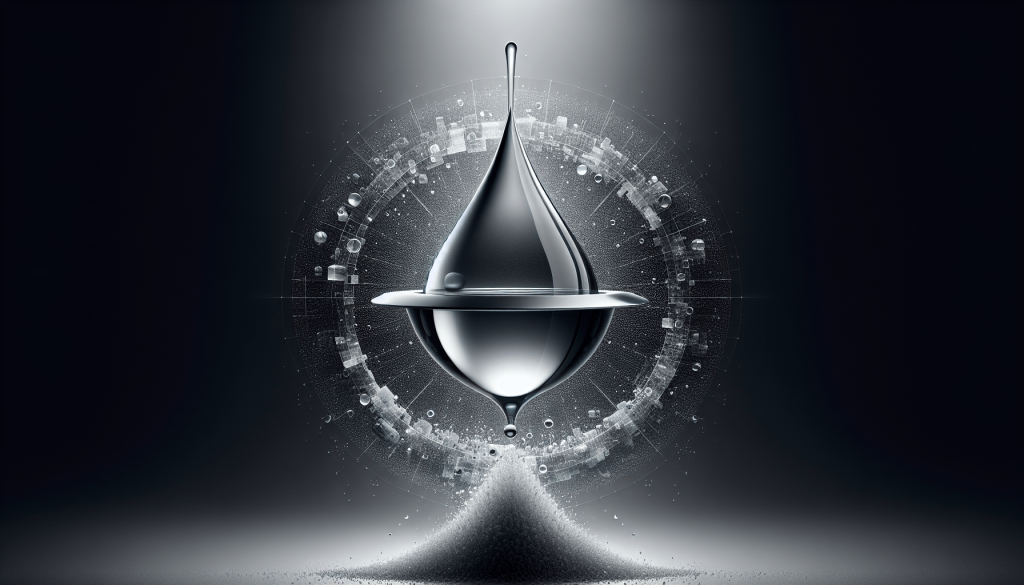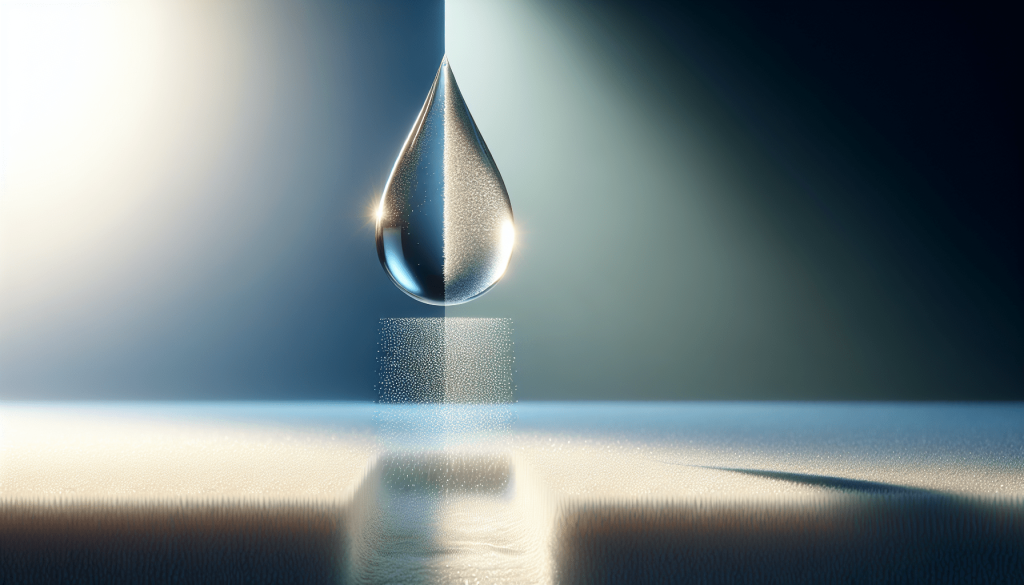Are you tired of constantly buying bottled water or worrying about the quality of your tap water? Look no further, as we delve into the world of filtration systems to find out which one is the most effective in purifying your water. From simple pitcher filters to advanced reverse osmosis systems, we will explore the benefits and drawbacks of each option, helping you make an informed decision for a healthier and more convenient water source. Get ready to discover the most effective filtration system for your needs!

Introduction to Filtration Systems
Filtration systems are an essential part of ensuring clean and safe water for various purposes. Whether it’s for drinking, cooking, or other household activities, a reliable filtration system is necessary to remove impurities and contaminants from the water supply. Understanding the different types of filtration systems, their effectiveness, and what factors to consider when choosing the right one for your needs is crucial for maintaining optimal water quality.
Definition of Filtration Systems
Filtration systems refer to the equipment or devices used to remove unwanted particles, microorganisms, chemicals, and other contaminants from water. These systems employ various techniques and technologies to improve water quality and make it suitable for consumption or specific applications. By trapping and eliminating harmful substances, filtration systems create access to cleaner, healthier water.
Importance of Filtration Systems
The importance of filtration systems cannot be overstated when it comes to water quality. Without appropriate filtration, water can contain a wide range of impurities, including bacteria, viruses, sediment, chemicals, and heavy metals. Consuming or using such contaminated water can lead to adverse health effects and potentially compromise the safety and taste of our beverages and food. Filtration systems play a crucial role in ensuring that the water we use is free from harmful contaminants, providing peace of mind and promoting overall well-being.
Types of Contaminants Removed by Filtration
Filtration systems are designed to eliminate a variety of contaminants commonly found in water. These contaminants can include:
- Sediments: Filtration systems remove particles such as dirt, sand, and rust that can affect the appearance and taste of water.
- Bacteria and Viruses: Certain filtration methods effectively capture and kill harmful microorganisms, making the water safe for consumption.
- Chemicals: Filtration systems can target various chemicals like chlorine, pesticides, herbicides, and volatile organic compounds (VOCs), reducing their presence in water.
- Heavy Metals: Some filtration systems can effectively remove heavy metals such as lead, arsenic, and mercury, which can be harmful even in small amounts.
- Odors and Taste: Filtration can address unpleasant odors and tastes caused by chlorine or organic matter, improving the overall drinking experience.
By removing these contaminants, filtration systems enhance the quality and safety of water, ensuring it is fit for consumption and other purposes.
Popular Filtration Systems
Now that we understand the significance of filtration systems, let’s explore some of the most popular options available to consumers today. Each of these systems utilizes different techniques and materials to purify water, catering to various needs and preferences.
Reverse Osmosis
Reverse osmosis (RO) systems are highly effective in eliminating a wide range of impurities from water. This filtration method involves forcing water through a semipermeable membrane, removing contaminants through the process of osmosis. RO systems can remove sediments, bacteria, viruses, chemicals, heavy metals, and other undesirable substances, providing exceptionally clean and pure water. However, it’s worth noting that RO systems can also remove beneficial minerals from water.
Activated Carbon
Activated carbon filtration is a popular method that uses adsorption to trap contaminants. This type of filtration is effective in removing chlorine, volatile organic compounds (VOCs), some pesticides, and unpleasant odors and tastes. Activated carbon filters are commonly found in pitchers, faucet attachments, and countertop systems. While efficient in reducing certain impurities, it may not effectively remove all types of contaminants, such as heavy metals or dissolved solids.
UV Sterilization
UV sterilization filtration systems employ ultraviolet light to kill bacteria, viruses, and other microorganisms present in water. This method is highly effective in disinfecting water and eliminating the risk of waterborne diseases. UV sterilization is often used in conjunction with other filtration techniques to provide comprehensive water purification. However, it does not remove sediments, chemicals, or heavy metals, so it is beneficial when combined with other filtration methods.
Ceramic Filters
Ceramic filters are made of porous materials that effectively trap sediments, bacteria, and protozoa from water. These filters are typically used in portable or gravity-fed systems and are known for their durability and longevity. Ceramic filters are an economical option and can be easily cleaned to maintain their effectiveness. However, they may not remove certain dissolved substances or chemicals, making it important to consider the specific contaminant profile of the water source.
Gravity Filters
Gravity filters are simple and easy-to-use systems that rely on gravity to move water through filtration media. These filters are suitable for households without access to electricity or plumbing and are often used during camping or emergencies. Gravity filters can effectively remove sediments, bacteria, and protozoa, providing clean and safe water. However, they may have limitations in removing certain chemicals or dissolved substances, and the flow rate can be slower compared to other filtration methods.
Factors to Consider when Choosing a Filtration System
When it comes to selecting the right filtration system for your needs, several important factors should be taken into consideration. By evaluating these factors, you can ensure that the chosen system effectively addresses your specific water quality concerns.
Water Source and Contaminant Profile
Understanding the source of your water and the contaminants it contains is crucial. Whether you rely on municipal water, well water, or surface water, analyzing its quality is essential. Conducting a water test or contacting your local water utility can provide valuable information about the presence of impurities, such as bacteria, heavy metals, or chemicals. Once the contaminant profile is known, choosing a filtration system that targets those specific contaminants becomes easier.
System Cost and Maintenance
The cost of the filtration system, including both the initial investment and ongoing maintenance, should be considered. Different filtration technologies come with various price ranges, and it’s important to find a balance between affordability and performance. Researching the costs involved in replacing filter cartridges or membranes will provide a better understanding of the long-term expenses associated with maintaining the system.
Installation Requirements
Consider the installation requirements of the filtration system. Some systems may require professional installation, while others can be easily set up by the user. Depending on your DIY skills and the compatibility of the system with your plumbing, you should choose a system that suits your convenience and ease of installation.
Flow Rate and Water Usage
The flow rate of the filtration system is another critical factor to consider. It determines how quickly the system can produce filtered water and how many outlets can be supplied simultaneously. Assessing your household’s water usage patterns and the desired flow rate will help determine the appropriate system capacity.
Certifications and Standards
Look for filtration systems that have been certified by reputable organizations such as NSF International or the Water Quality Association. These certifications ensure that the system meets specific standards for removing contaminants and performs as claimed by the manufacturer. Choosing a certified system gives you confidence in its effectiveness and reliability.
Effectiveness of Reverse Osmosis Filtration System
Among the various filtration systems available, reverse osmosis stands out as a highly effective method of purifying water. Let’s delve into the principles, contaminant removal capabilities, and advantages and disadvantages of this system.
Principle of Reverse Osmosis Filtration
Reverse osmosis filtration utilizes a semipermeable membrane to remove impurities from water. It works by applying pressure to one side of the membrane, forcing water molecules to pass through while leaving behind larger particles and contaminants. This process efficiently removes bacteria, viruses, sediments, chemicals, heavy metals, and other dissolved solids, resulting in high-quality, pure water.
Removal of Contaminants
Reverse osmosis systems are known for their exceptional contaminant removal capabilities. They can effectively remove up to 99% of bacteria, viruses, sediments, heavy metals, and certain chemicals present in the water. Reverse osmosis is particularly effective in eliminating contaminants such as lead, arsenic, fluoride, nitrates, and chloride.
Pros and Cons of Reverse Osmosis
The benefits of reverse osmosis include its ability to deliver exceptionally pure water, removing a wide range of contaminants. It is ideal for households with high contaminant levels or specific health concerns. Additionally, reverse osmosis systems are generally low maintenance, and the replacement of the membrane and filters is typically straightforward.
However, some drawbacks should also be taken into consideration. Reverse osmosis filtration tends to be slower than other methods, which can hinder the production of filtered water. Additionally, the process removes beneficial minerals from the water, potentially impacting its taste and nutritional value. Considering these factors and the specific water quality requirements is essential when evaluating the effectiveness of reverse osmosis filtration.

Effectiveness of Activated Carbon Filtration System
Activated carbon filtration systems are widely used due to their ability to address specific water quality concerns. Let’s explore the principles behind this method, discuss the contaminants it can remove, and evaluate its advantages and disadvantages.
Principle of Activated Carbon Filtration
Activated carbon, also known as activated charcoal, is a highly porous material that has the ability to attract and retain contaminants. When water passes through activated carbon filters, impurities such as chlorine, VOCs, pesticides, and certain taste and odor compounds adhere to the carbon surface, effectively removing them from the water.
Removal of Contaminants
Activated carbon filtration is efficient in reducing chlorine and its by-products, improving the taste and smell of water. It is also effective in removing some pesticides, herbicides, and other organic compounds that may be present in the water. The filtration process can eliminate certain unpleasant odors, making the water more enjoyable to drink.
Pros and Cons of Activated Carbon
One of the major advantages of activated carbon filtration is its ability to improve the taste and odor of water, enhancing the overall drinking experience. It is an affordable filtration method and is commonly found in pitchers, faucet attachments, and refrigerator filters. Additionally, activated carbon filters require minimal maintenance and are relatively easy to replace.
However, it is important to note that activated carbon filters may not remove all contaminants, such as heavy metals or dissolved solids. The effectiveness of this method can also diminish over time, requiring regular replacement of the carbon filter. Considering your specific water quality concerns and the limitations of activated carbon filtration will help determine its suitability for your needs.
Effectiveness of UV Sterilization Filtration System
UV sterilization filtration systems utilize ultraviolet light to disinfect water and eliminate harmful microorganisms. Let’s explore the principles of this method, its contaminant removal capabilities, and the advantages and disadvantages it offers.
Principle of UV Sterilization Filtration
UV sterilization works by exposing water to ultraviolet light, which damages the DNA of microbes, rendering them unable to reproduce or cause infections. By destroying bacteria, viruses, and other microorganisms, UV sterilization effectively disinfects water without the use of chemicals.
Removal of Contaminants
UV sterilization is highly effective in killing a wide range of bacteria, viruses, and other pathogens present in the water. It provides an additional layer of protection against waterborne diseases, making it a valuable component of a comprehensive water treatment system. However, it is important to note that UV sterilization does not address other contaminants such as sediments, chemicals, or heavy metals.
Pros and Cons of UV Sterilization
The main advantage of UV sterilization is its ability to provide a chemical-free disinfection process, ensuring the destruction of harmful microorganisms. It is a reliable and efficient method to purify water and does not alter its taste, odor, or color. UV sterilization systems are low maintenance, with minimal replacement and operational costs.
However, UV sterilization is solely focused on killing microorganisms and does not remove sediments or chemicals. As a result, it is commonly used in conjunction with other filtration methods to provide comprehensive water purification. Considering your specific water quality concerns and the need for pathogen control will determine the suitability of UV sterilization filtration for your situation.

Effectiveness of Ceramic Filters
Ceramic filters are a popular choice for portable or gravity-fed filtration systems due to their durability and filtration capabilities. Let’s explore the principles behind ceramic filtration, discuss the contaminants it can remove, and evaluate its advantages and disadvantages.
Principle of Ceramic Filtration
Ceramic filters consist of porous ceramic materials that effectively trap particles and microorganisms through physical filtration. The small pores in the ceramic material prevent the passage of sediments, bacteria, protozoa, and other impurities, ensuring cleaner water.
Removal of Contaminants
Ceramic filters are effective in removing sediments, bacteria, protozoa, and other microorganisms from water. They provide an added layer of protection and are capable of improving the clarity and quality of water. However, ceramic filters may not effectively remove dissolved solids or chemicals, so their overall effectiveness depends on the specific contaminants present in the water source.
Pros and Cons of Ceramic Filters
One of the major advantages of ceramic filters is their durability and longevity. They are often used in portable filtration systems, making them suitable for outdoor enthusiasts, travelers, or emergency situations. Ceramic filters are also affordable and require minimal maintenance. Additionally, they can be easily cleaned and reused, making them environmentally friendly.
However, it is essential to consider that ceramic filters may not remove all types of contaminants or dissolved substances. They can become clogged with sediment or biofilm over time, reducing their filtration efficiency. As with any filtration system, understanding the specific contaminant profile and considering the limitations of ceramic filters is crucial when evaluating their effectiveness.
Effectiveness of Gravity Filters
Gravity filters are simple and convenient filtration systems that rely on the force of gravity to move water through a filtration media. Let’s explore the principles behind gravity filtration, discuss the contaminants it can remove, and evaluate its advantages and disadvantages.
Principle of Gravity Filtration
Gravity filters utilize the force of gravity to move water through different filtration media, typically consisting of activated carbon and ceramic filters. As the water passes through these filters, sediments, bacteria, protozoa, and other impurities are captured, resulting in cleaner water.
Removal of Contaminants
Gravity filters are effective in removing sediments and impurities such as bacteria and protozoa. They provide an additional layer of protection and can enhance water clarity. However, gravity filters may have limitations in removing dissolved substances or certain chemicals, so their overall effectiveness depends on the specific water quality concerns.
Pros and Cons of Gravity Filters
One of the main advantages of gravity filters is their simplicity and ease of use. They do not require electricity or plumbing, making them suitable for use in situations where access to these utilities is limited. Gravity filters can be portable and are commonly used during camping, hiking, or as emergency water filters. These filters are also low maintenance, and their long-lasting filter cartridges can be easily replaced.
However, gravity filters may have limitations in terms of the flow rate and certain contaminant removal capabilities. They may not effectively remove all types of contaminants or dissolved substances. Considering the specific water quality concerns and the convenience of using a gravity filter is necessary when evaluating their effectiveness.

Comparative Analysis of Filtration Systems
Now let’s compare the effectiveness of the various filtration systems we have discussed based on key factors such as removal capacity, energy efficiency, installation and maintenance requirements, longevity, and overall effectiveness.
Removal Capacity for Different Contaminants
Reverse osmosis filtration systems are known for their exceptional removal capacities, effectively eliminating bacteria, viruses, sediments, heavy metals, and various chemicals. Activated carbon filters are efficient in reducing chlorine, VOCs, certain pesticides, and improving taste and odor. UV sterilization provides excellent pathogen control, while ceramic and gravity filters effectively remove sediments, bacteria, and protozoa.
Energy Efficiency and Environmental Impact
In terms of energy efficiency, gravity filters require no electricity, making them the most environmentally friendly option. UV sterilization systems are also energy efficient, while reverse osmosis filtration systems consume more energy due to the pressure required. The environmental impact can vary depending on the system, with reverse osmosis and ceramic filters requiring periodic replacement of filter membranes or cartridges.
Ease of Installation and Maintenance
Activated carbon filters, gravity filters, and ceramic filters are generally easy to install and maintain, often requiring simple filter replacement. Reverse osmosis systems and UV sterilization systems may have more complex installation requirements and periodic maintenance tasks such as membrane replacement for reverse osmosis and ultraviolet lamp replacement for UV sterilization.
Longevity and Replacement Costs
Reverse osmosis systems typically last longer than activated carbon filters, with membrane replacement necessary every few years. Activated carbon filters and ceramic filters may require more frequent replacement, especially if water quality is poor or usage is high. Gravity filters and UV sterilization systems also have long lifespans, with replacement cartridges or lamps needed periodically.
Overall Effectiveness
Considering all the factors discussed, the overall effectiveness of a filtration system depends on the specific water quality concerns and individual preferences. Reverse osmosis filtration systems provide comprehensive purification, but they can be costly and remove beneficial minerals. Activated carbon filters are effective in improving taste and odor, but they may not address all types of contaminants. UV sterilization systems solely focus on pathogen control, while ceramic and gravity filters are suitable for portable or emergency situations.
Conclusion
In summary, choosing the most effective filtration system depends on understanding your specific water quality concerns and evaluating the advantages and disadvantages of different filtration methods. Reverse osmosis, activated carbon, UV sterilization, ceramic, and gravity filters all have their unique advantages and capabilities in removing various contaminants from water.
Considerations such as water source and contaminant profile, system cost and maintenance, installation requirements, flow rate and water usage, and certifications and standards can guide you in selecting the right filtration system. Regular filter replacement and maintenance are also essential to maintain optimal water quality.
By investing in a reliable filtration system, you can ensure that you and your family have access to clean, safe, and great-tasting water for all your needs.



